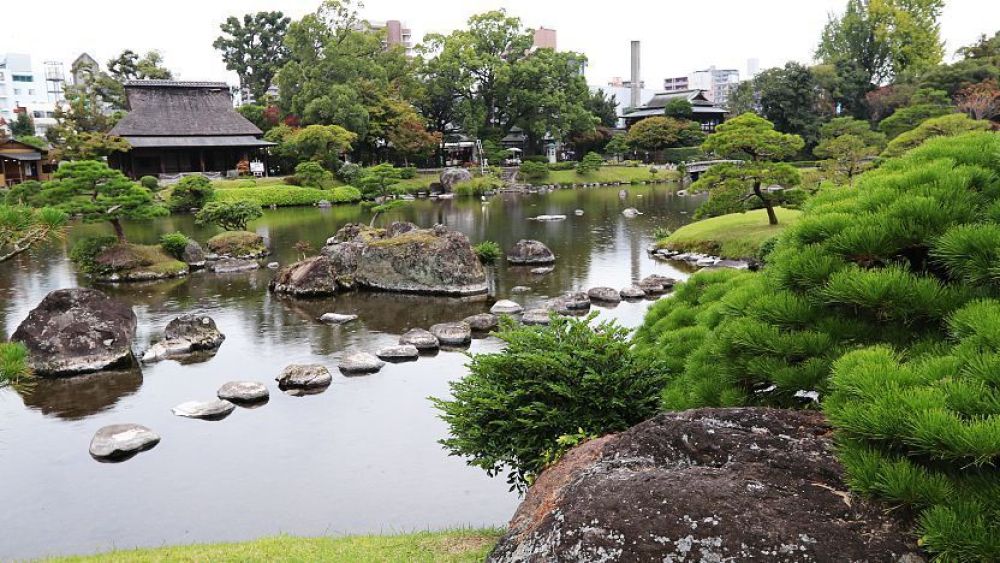

The Suizenji Jojuen Garden is a quintessential cultural landmark located in Kumamoto Prefecture, Japan. This traditional Japanese garden represents a splendid fusion of nature, art, and history. Renowned for its meticulous design and historical significance, Suizenji Jojuen has been a prominent destination for both local and international tourists.
The garden's origins can be traced back to the 17th century, during the Edo period. It was initially developed by Tadatoshi Hosokawa, the feudal lord of the Higo Province, which is modern-day Kumamoto. The garden was constructed as a retreat for the Hosokawa family and took several decades to complete, reflecting the "kaiyu" or strolling garden style, which was popular during this time.
Over the centuries, Suizenji Jojuen has been carefully preserved and maintained. It features a miniature representation of the 53 stations of the Tokaido, the famous road that connected Edo (Tokyo) to Kyoto during the Edo period. Visitors can appreciate the miniature Mount Fuji, Edo Castle, and other representations that showcase Japan's rich cultural history and artistic traditions.
As public interest in Japanese gardens began to flourish, Suizenji Jojuen quickly emerged as a top attraction. The garden gained renown not only for its traditional aesthetics but also as a living piece of Japan's history. Efforts to make the site more accessible and informative have led to the implementation of guided tours, informational signage in multiple languages, and cultural events showcasing traditional Japanese arts and ceremonies such as tea ceremonies.
In recent years, the garden has focused on promoting sustainability and preserving the integrity of the historical landscape. Visitors are encouraged to enjoy the garden respectfully, following guidelines to protect the flora and the natural habitat it provides for local fauna.
In light of the global trend towards experiential travel, Suizenji Jojuen has begun offering more interactive experiences. These include seasonal festivals, where tourists can engage with Japanese culture during cherry blossom viewing in spring or maple leaf viewing in autumn, as well as workshops where participants can learn about traditional Japanese gardening techniques.
Another trend is the rise of digital tourism. The garden has started utilizing technology to enhance the visitor experience through digital guides and augmented reality apps, providing a deeper understanding of the site's historical context and importance.
Travel Recommendation: Visitors should allocate at least a couple of hours to fully appreciate the serene beauty and historical elements of Suizenji Jojuen. It is advisable to visit during the quieter early morning hours or late afternoons on weekdays for a more peaceful and meditative experience.